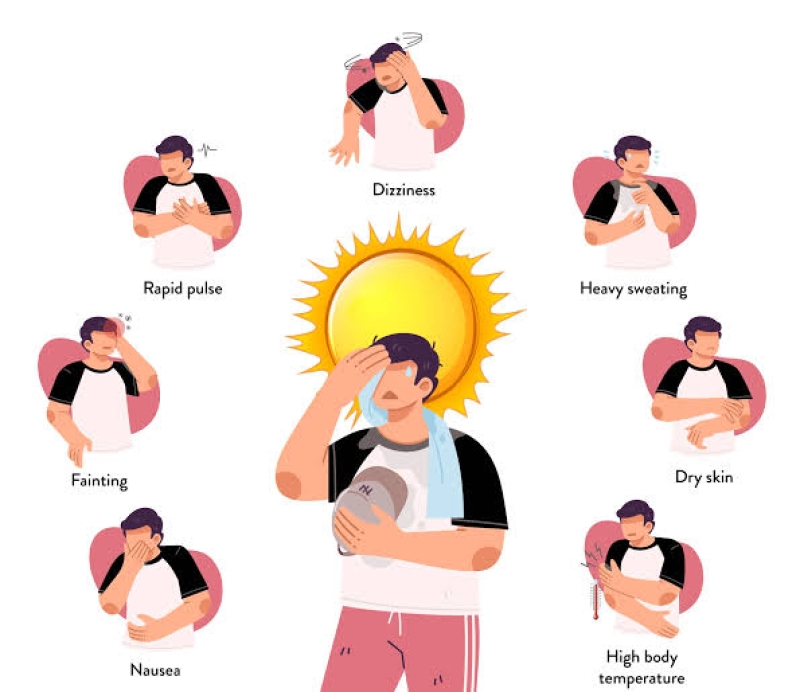- CA Yunus pays homage to Liberation War martyrs on Victory Day |
- Bangladesh capital market extends losing streak for second day |
- Bangladesh celebrates Victory Day Tuesday |
- 'Different govts presented history based on their own ideologies': JU VC |
How to stay cool and safe during a heat wave

With climate change intensifying heat waves worldwide, staying cool is becoming more difficult and critical. The burning of fossil fuels like coal, oil, and gas continues to heat the planet, worsening conditions in already hot regions.
Extreme heat isn't just uncomfortable — it poses serious health risks, especially for older adults, children, and people with underlying medical conditions.
Here are key tips to stay safe:
When Does Heat Become Dangerous?
It's not just about the air temperature. The most detailed measurement is called the Wet Bulb Globe Temperature (WBGT), which accounts for temperature, humidity, wind, and sunlight exposure.
A more common, but less precise, measure is the heat index, which combines temperature and humidity to estimate how hot it feels. This explains why a shaded park in Phoenix may feel safer on a 90°F (32°C) dry day compared to a humid 80°F (27°C) day in Little Rock.
For example, the National Oceanic and Atmospheric Administration (NOAA) says that if it's 96°F (36°C) with 45% humidity, prolonged exposure or physical activity becomes dangerous.
Even healthy people can struggle to tolerate prolonged heat, especially in humid conditions, recent research shows.
How to Cool Down Without AC
Overnight heat is particularly dangerous, warns Ashley Ward of Duke University’s Heat Policy Innovation Hub.
“Our bodies need time to cool off, but when nighttime temperatures stay above 75°F (24°C), health risks like heat exhaustion and heat stroke increase,” Ward explained.
Her advice:
Use air conditioning if you have it — even cooling one room can make a big difference.
Create a “cool corner” where you can rest or sleep.
Evaporative (swamp) coolers help in dry climates but may worsen humidity indoors.
Fans are more effective in humid areas.
If you don’t have AC:
Spend time in air-conditioned public spaces such as malls, libraries, movie theaters, or community cooling centers.
Check if you qualify for support programs like the Low-Income Home Energy Assistance Program, which may help you buy a window AC unit. Some local organizations also provide assistance.
If You Work Outdoors, Know Your Rights
The U.S. lacks nationwide heat safety rules for workers, though some states — including California, Oregon, Washington, Nevada, Colorado, Minnesota, and Maryland — have regulations in place, according to the Natural Resources Defense Council.
Bharat Venkat from UCLA's Heat Lab notes enforcement gaps remain, and many workers have little control over their breaks or workspace conditions.
To stay safe:
Hydrate frequently, even before feeling thirsty.
Wet your clothes or apply cool water to your hands, feet, neck, and armpits.
Use handheld fans or cooling vests.
Avoid physical activity during peak heat, and bring extra water.
Recognizing Heat Illness Symptoms
Some medications and health conditions can reduce your ability to notice heat stress.
Early signs:
Heavy sweating
Muscle cramps
Headache
Act immediately — cool down with water, find shade or air-conditioned spaces.
More serious signs (heat exhaustion):
Dizziness
Rapid heart rate
Weakness
Heat stroke, the most dangerous stage, can cause:
Confusion
Slurred speech
Fainting
“If you experience these severe symptoms, call 911 immediately,” Ward advised. “There’s no need to hesitate — heat illness can escalate quickly.”
Bottom line: With heat waves worsening, proactive steps like creating cool spaces, staying hydrated, and recognizing symptoms can help protect your health, even without air conditioning, reports UNB.

